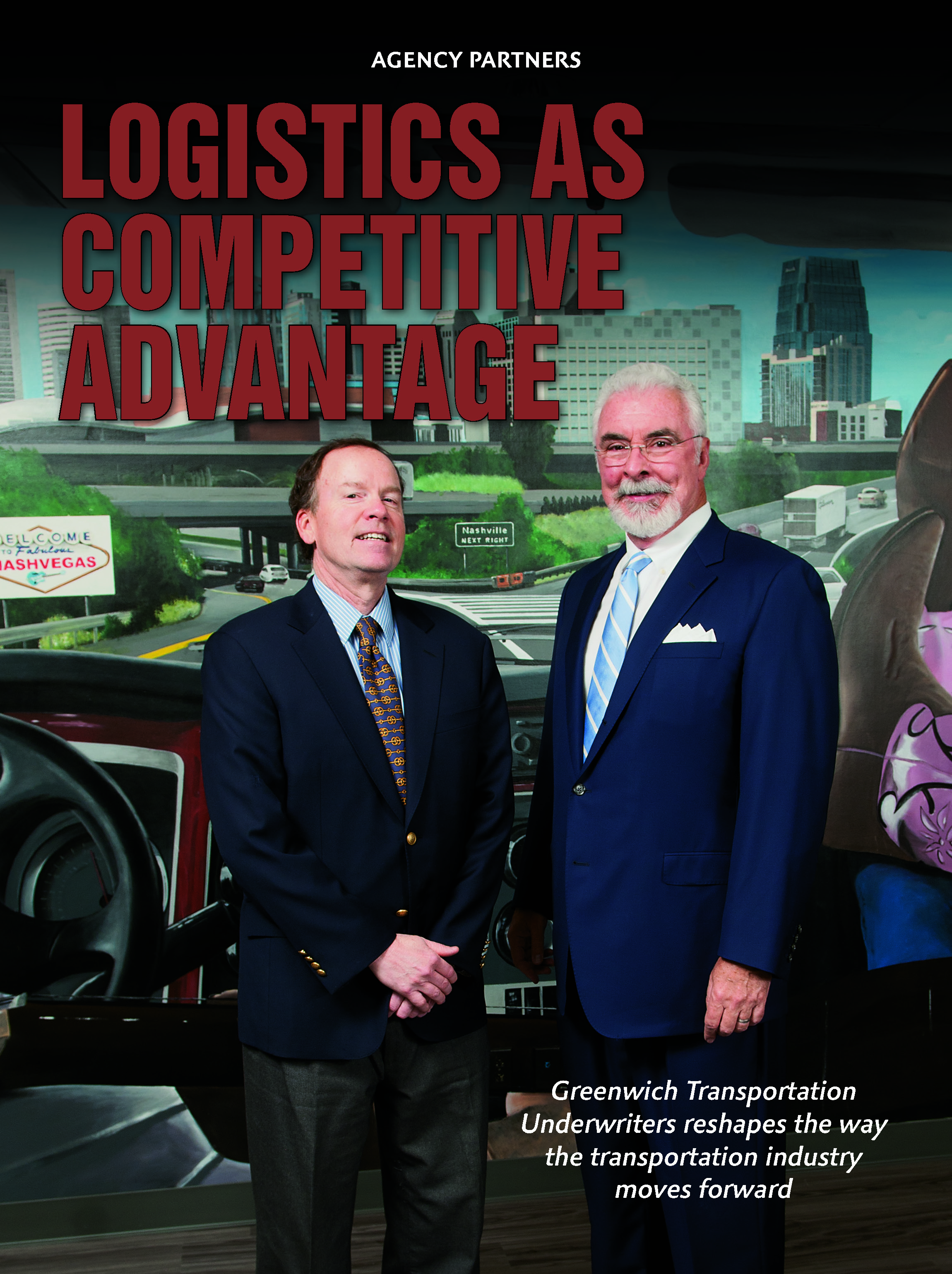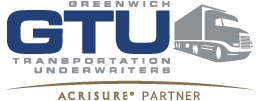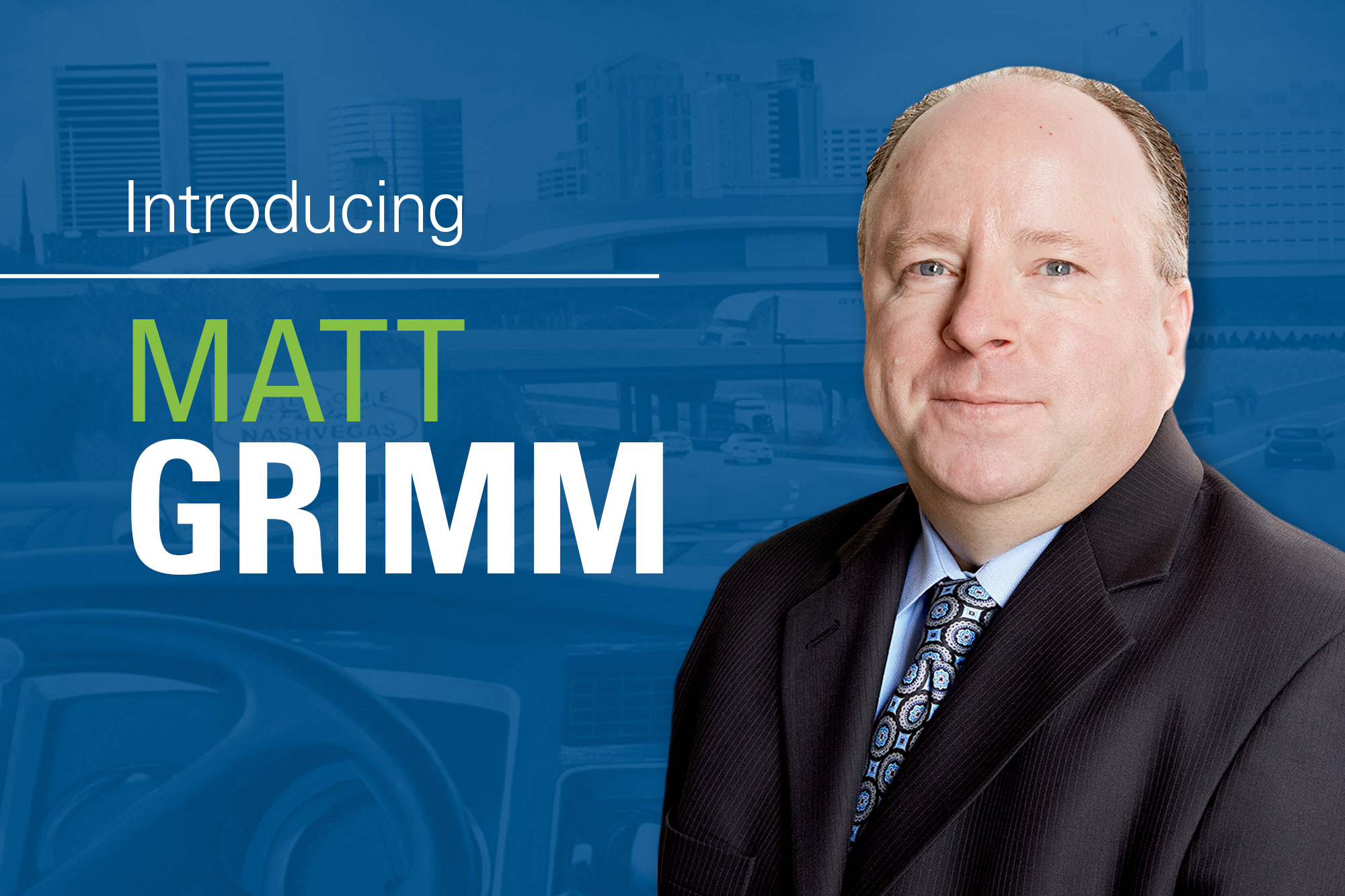Article Published in Rough Notes, October 2017. Written by Lori Widmer, a Philadelphia-based writer and editor who specializes in insurance and risk management.
Greenwich Transportation Underwriters reshapes the way the transportation industry moves forward
The people in logistics like to say they were ‘Ubering’ before Uber existed,” says Ben Armistead, director of logistics and partner at Greenwich Transportation Underwriters (GTU), a Brentwood, Tennessee-based managing general agent that provides commercial auto and logistics coverage.
That sentiment echoes both the growth and challenges within the transportation industry, which Armistead and Ward Stein, partner and director of trucking, have seen firsthand. Armistead says there’s a different level of expectation these days within transportation. He describes that expectation, coming from both the company and the producers, as “doing it, doing it right, and doing it right now.”

Click here to download and/or print this article.
Thank Amazon and the explosion of online commerce for the phenomenon. The sea change created within the supply chain has certainly influenced the insurance equation, and Armistead says it has increased the level of expectation across the board. “There’s an immediacy issue in what folks like us need to do and provide.”
That’s where GTU has hit its stride. Founded in 1981, the firm has come out of the most recent recession poised to help producers grow their transportation book of business. A privately owned company, GTU is a small team with big impact. With 24 employees—including four underwriters in logistics and five in trucking—the company underwrites specialized logistics coverage and trucking/business auto operations. “Our tag line is ‘reliable, responsive, and resourceful,’” Stein says.
According to GTU’s survey of their producers, it’s a philosophy that’s getting high marks. “They think of us highly from the standpoint of being competent subject matter experts who deliver a fair combination of coverage and pricing,” Stein adds. “We may not be the cheapest, but we do deliver a high level of competency, and we work as advocates and coaches for our producers to deliver the best coverages for them and for their clients.”
Market Upheaval
In a commercial auto market that’s firming and where rates are on the rise, this means going beyond traditional approaches, says Stein. The current market, he says, has seen rates increase by 8% to 12% in each of the last two years, and has experienced additional pressure from an increase in miles driven, more vehicles on the road, distracted driving, more aggressive lawsuits, and rising medical costs.
“Our assessment is that the market will likely contract, with fewer insurers willing to participate in the cyclical profitability fluctuations,” he says. The “chronic unprofitability” in commercial auto is the result of what Stein describes as a “failure to correct systemic underwriting and pricing, along with poor expense control.”
Without appropriate means of measuring pricing and performance differences, Stein says insurers are unable to determine the trends contributing to profitability. “Essential data isn’t collected, collated, or analyzed,” Stein adds. “Differentiation by segment isn’t recognized. Benchmarks aren’t utilized. Collectively, these failures prevent accurate and timely responses to pressing needs for pricing adjustments to improve profitability and sustainability or to exploit opportunities in profitable segments.”
He points out that insurers deserve to make a profit, but they’ll need to implement better product management practices, harness their data, utilize predictive analytics, and embrace emerging technology to survive, let alone thrive. “If nothing changes,” Stein says, “nothing changes.”
To balance their agency against market instability, the veterans—who’ve seen plenty in their 35 years at the helm of GTU—sought diversification in logistics. Stein says that 25 years ago, the logistics business accounted for less than 2% of the freight hauled in the country. Today, it’s 45%. It’s a new climate for motor carriers as well as their clients.
“In the past, if a motor carrier had a relationship with a particular shipper or manufacturer and they didn’t have equipment to handle that shipper or manufacturer’s needs, they would have to call a friend or do trip leasing—take on a driver or a fleet they’ve never met before—and allow them to operate under the motor carrier’s authority,” says Stein. “It was a dangerous situation.”
Fast-forward to 2017, when the transportation industry and logistics are inextricably united. Technology is the glue, says Stein. “Freight brokers often have relationships with not only dozens but hundreds of motor carriers they have qualified. They have relationships with dozens if not hundreds of shippers. Their world has expanded exponentially.”
Creating a niche
That expanded world, which came as the country was recovering from a recession, is where one determined partner has created value for the industry. In 2008, GTU saw a number of markets withdraw or greatly reduce their business in long-haul trucking. The reason: prices were plummeting and profitability was right behind. “The downward spiral of the market cycle drove the commercial market to an untenable and unsustainable place,” Stein recalls. “Insurers scrambled to adjust, but many simply exited the market. At the same time, with diesel fuel rising to over $4 per gallon, the pressure on truckers was enormous, causing a lot of small operations to go out of business or consolidate with larger fleets.”
Yet Armistead saw opportunity for a well-planned, well-timed recovery. Thanks to his focus on growing the logistics side of their business, GTU has developed an algorithm that drives the logistics relationships. “Logistics is basically a dating service,” says Armistead. “It’s a matchmaking service between the shipper and the carrier. Understanding the underwriting components at the carrier level is especially important relative to issues that involve negligent hiring, negligent entrustment, and vicarious liability.”
The company’s algorithm measures approximately 225,000 interstate carriers, providing a grading system based on generally accepted transportation underwriting practices—something no other underwriter of transportation and logistics is doing, Armistead says. The system gives a comprehensive view into the safety and behavior of the company and its fleet. Included is data from the Federal Motor Carrier Safety Administration (FMCSA), which accrues information such as roadside inspections, accident reports, audits, driver fitness, crashes, vehicle maintenance and more.
Armistead says their data analytics grew from a combination of two needs: the normal insurance protection, and a need to use insurance as a sales advantage. “Right now, the quality of the logistics operation’s insurance can be the difference between their success and their failure based on the constituency they serve,” he says.
It’s an evolution that’s becoming what Armistead calls a robust coverage opportunity. “In the logistics business, there’s an opportunity for a transportation producer or someone involved in the supply chain business to differentiate themselves in a way unlike they’ve been able to differentiate before.”
Stein says the data is a game changer for insurers, as well. “Now, insurance companies are able to take into consideration all of the specific data that’s updated on a regular basis, and they’re able to get insight into a particular driver and fleet performance. Not only is that available to the insurer, but it’s available to the logistics brokers who are able to discern a good trucking operation from a poor one. It benefits the public and the insurers, and it raises the bar for better standards within the overall operation.”
And it’s where transportation can teach a few lessons to the Ubers of the world, says Armistead. “Uber marries a driver to a potential renter. In logistics, they outsource the freight business. Technology is really driving significant improvements in the underwriting results of both transportation and logistics.”
Another game changer is telematics—technology that monitors location, movement, status, and behavior of fleet vehicles using installed electronic devices. “Telematics data looks at driver behavior behind the wheel—things like speeding, sudden braking, taking sharp turns, defensive maneuvers, and performance impacted by driver fatigue,” Stein notes. “Driver habits directly impact claims frequency and severity, so identifying poor behaviors lets insurers and clients implement training and corrective actions to improve results, ultimately reducing claim costs.”
Stein points out that insurers can assess the collected data and make more informed risk selection and pricing decisions. “For example, insureds with higher miles, those driving longer distances, and those operating at higher speeds and with more defensive maneuvers would be priced higher than risks with lower miles, driving shorter distances, at lower speeds, and with fewer defensive maneuvers,” he says. “Linking premiums to driver and fleet performance will lower costs for the better risks and allow insurers to appropriately price other risks.”
Trucks without drivers?
Technology is also opening up the transportation industry to other possibilities: most notably, driverless vehicles. Stein says early experiments with the technology in the trucking arena have been successful. However, he says the technology is a long way from being perfect, which means the impact of driverless commercial vehicles is a long way off. He says the challenges remaining include deteriorating infrastructure, mapping, real-time updates and weather considerations. Each of these, Stein says, will take significant investment.
And he says there will still be the need for drivers. He likens it to an airplane needing a pilot for takeoff and landing, yet where the autopilot does the majority of the work. “Nobody today can think of an 80,000-pound vehicle going down the highway at freeway speeds without a driver sitting behind the wheel.”
For now, the industry will remain focused on creating efficiencies and safety measures that reduce risk and increase profitability. And Stein and Armistead say they will continue to focus on developing trust and loyalty through their subject matter expertise and by addressing each new twist in the transportation evolution. “Even in our hubris, we are constantly stunned, as we look up over the ledge by what new things we find,” says Armistead. “The logistics business is very different today than it was a year or two ago. It’s much more robust, much more complicated, and as such requires drilling down and learning what components of risk must be evaluated.”
That means continuing to earn their reputation for doing the right thing by their clients, employees, and communities, says Stein. “Our goal is to get to insurance heaven. We’re trying to do things the right way, and we’re committed to putting our best foot forward on behalf of our constituencies—our clients and all of our insurers.”



